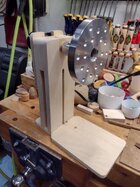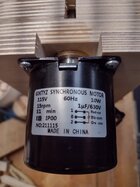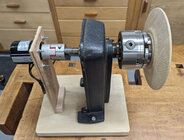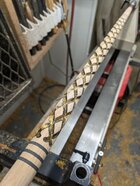I am seeking information about the turning speed required to prevent runs and drips when applying varnish or similar finishes such as Waterlox.
I viewed a video by John Williams that he uses to apply long-set epoxy. He turns his vessels at 8 RPM for 1.5 to 2 hours.
I viewed a video by John Williams that he uses to apply long-set epoxy. He turns his vessels at 8 RPM for 1.5 to 2 hours.




